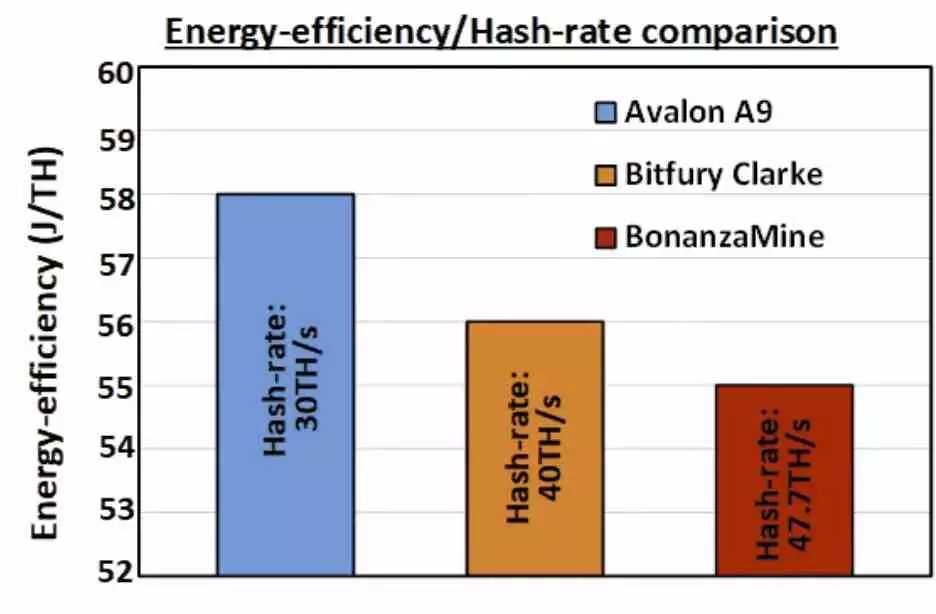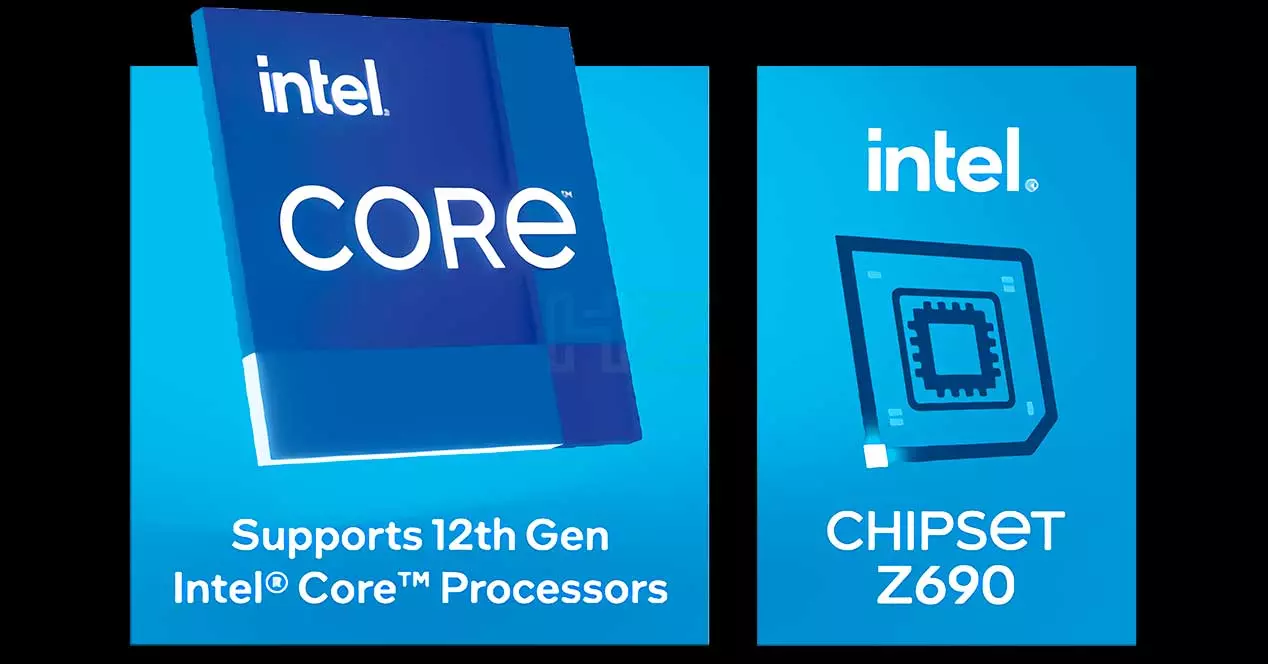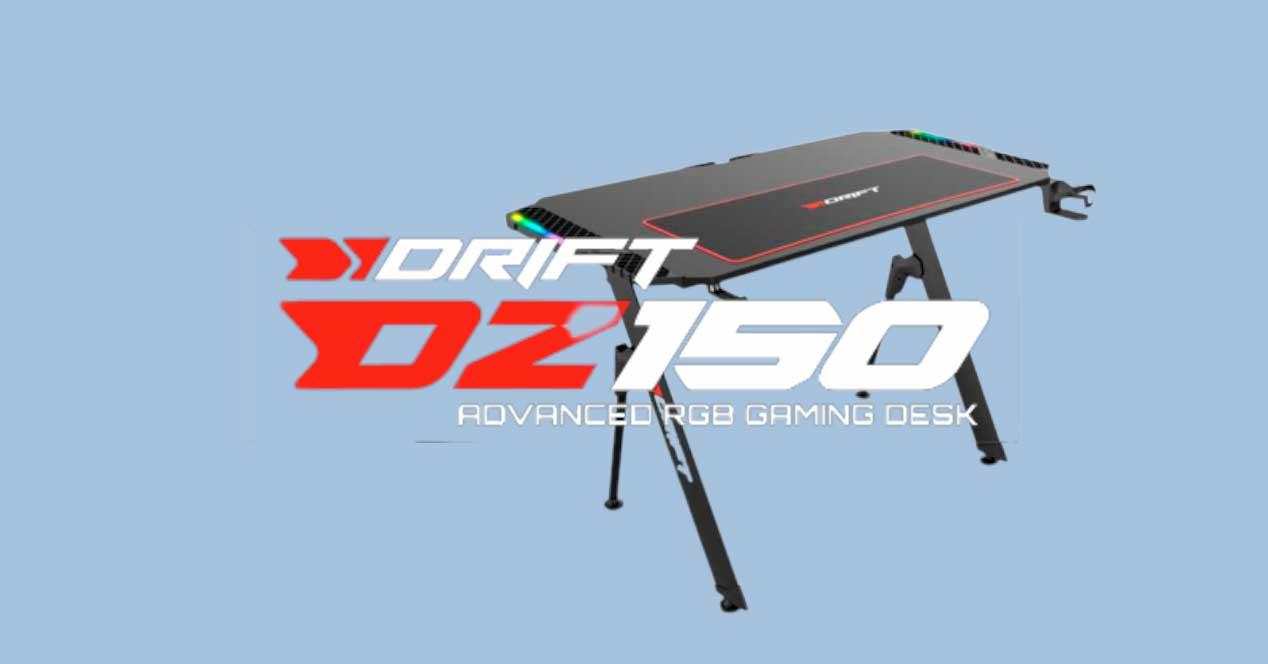
That Intel was developing a chip for mining had not been confirmed, but it was known unofficially and the wait for its confirmation has come to an end and that is that Bonanza Mine is the miner based on ASICs developed internally by Intel and built exclusively with its technology. . Let’s see how it performs against other options on the market.
There is no doubt that mining ASICs are the best type of microprocessor to mine cryptocurrencies. Its energy efficiency is much higher than that of a graphics card and we must not forget that the mining algorithm requires more and more computing power. Today there are already currencies such as the popular Bitcoin where it is no longer profitable to mine it through a GPU and the use of ASICs is necessary.
Well, Intel does not want to be left out of this market and at ISSCC 2022 they have presented Bonanza Mine, their ASIC for Bitcoin mining. Let’s see what the details are and why they have decided to bet on such a solution instead of orienting their ARC Alchemist GPUs to mining. Although let’s not forget that it has not been profitable for a long time to mine the most popular cryptocurrency with graphics cards.
Bonanza Mine, Intel’s mining ASIC
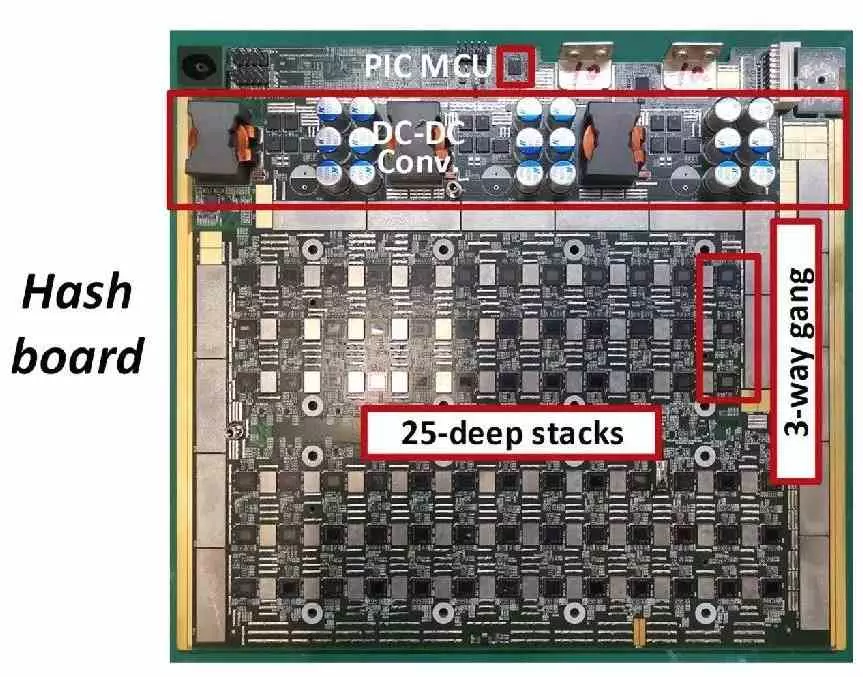
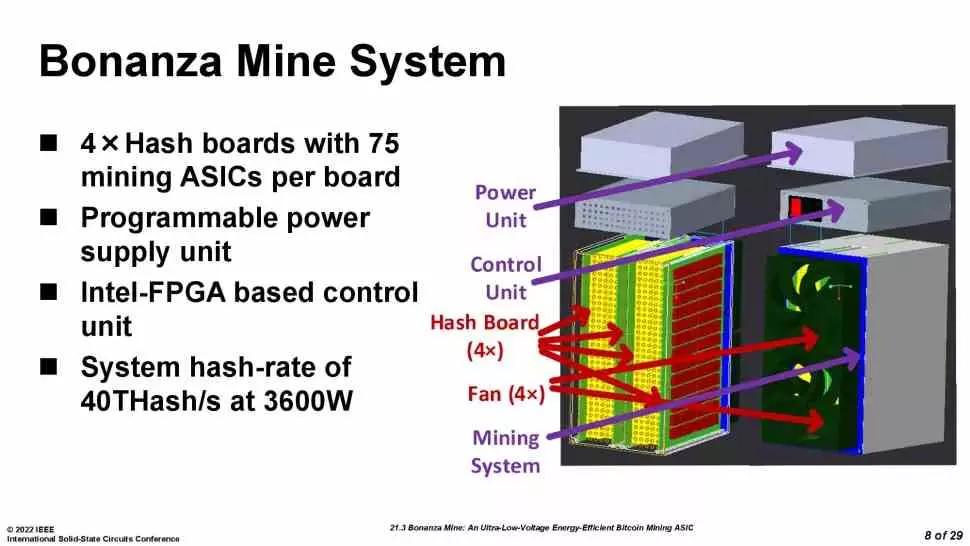
Intel just introduced its ASIC for mining BMZ1 and its corresponding miner Bonanza Mine and with figures that put on the table are impressive. To begin with we are talking about a specific domain processor that measures only 14.16mmtwo in a package of 7×7.5mm and manufactured under Intel 7nm nodealthough we do not know if it is Intel 7 or Intel 4. Up to a total of 300 BMZ1 chips will be part of every Bonanza Mine, giving you the ability to get 40 THash/s with a consumption of 3,600 W.
Each of the miners is made up of 4 motherboards, with 75 of the BMZ1 ASICs on each, an Intel FPGA with integrated ARM CPU as the control unit, and a programmable power supply. In terms of its performance with respect to consumption depending on what the needs are. In this case, they promise a much higher Joule mining capacity than other ASICs such as the Avalon 9 and Bitfury Clarke, where with a ratio of 54 J/TH it can reach 47.7 TH/s, as a result of being able to configure the PSU through the Control Unit.
They already have the ASIC ready for second generation mining
However, Intel’s first attempt at mining hardware falls a bit behind options like Bitmain’s Antmienr S19j XP which can achieve 104 THash/s with a consumption of 3010 W. Let’s not forget that the performance per watt is very high. important in this class of hardware. So Pat Gelsinger’s in theory would be at a disadvantage compared to other options on the market, however Intel already has its BMZ2 chip and is offering them to its customers. Of these we do not have their full specifications, as the ISSCC 2022 submission only covers the first generation ASIC.
At the moment Intel has several large clients, including BLOCK, Argo Blockchain and GRIID Infrastructure, who will directly use the second generation Bonanza Mine and its BMZ2 ASIC.
